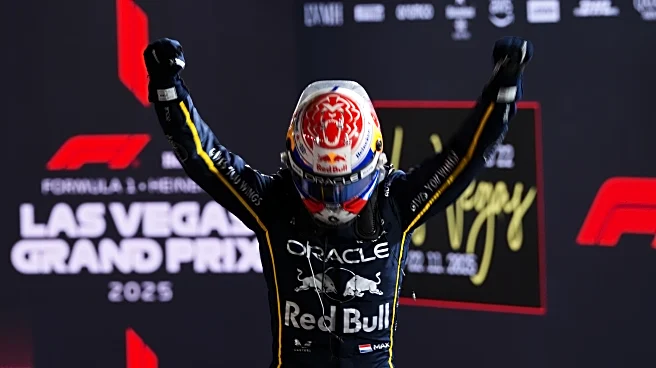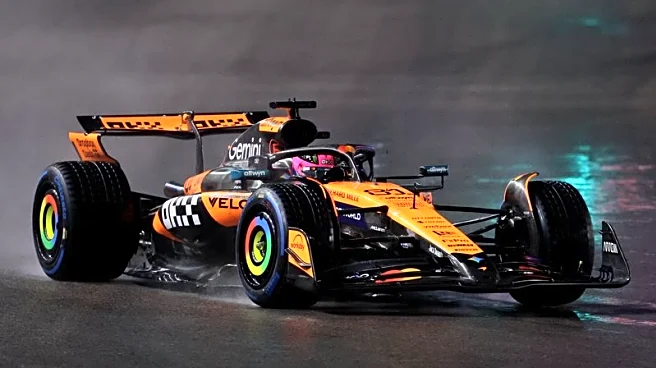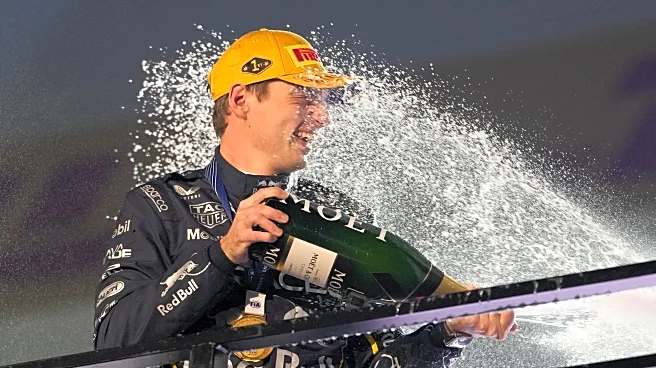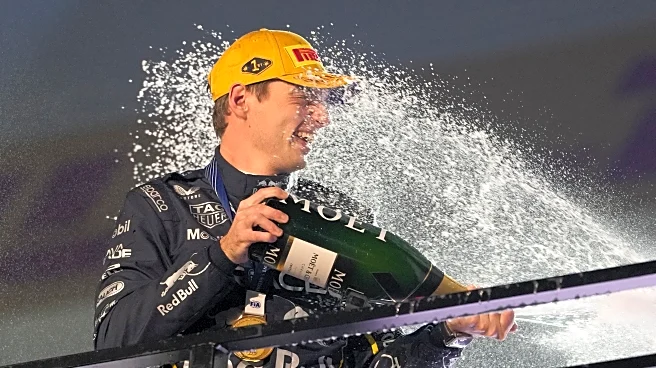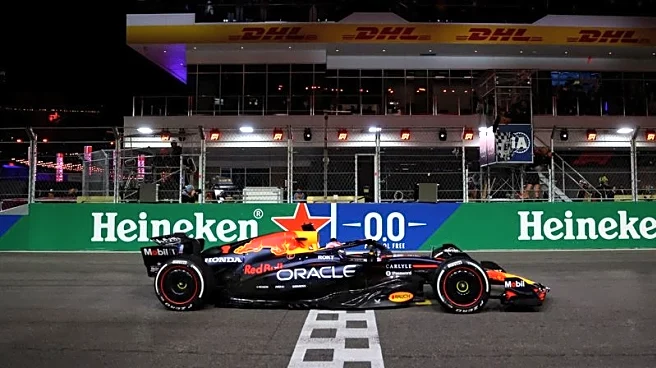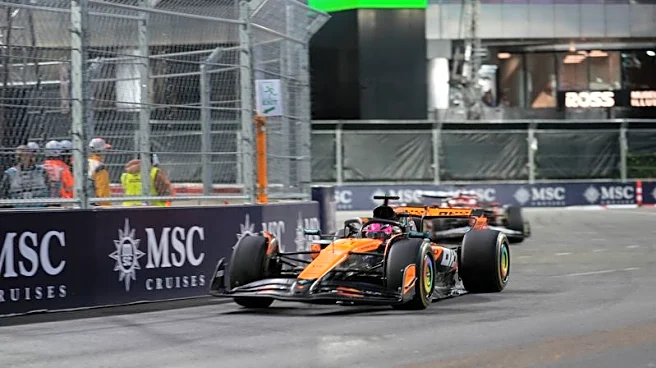What's Happening?
Lando Norris and Oscar Piastri, both McLaren drivers, have been disqualified from the Las Vegas Grand Prix due to technical regulation breaches concerning the thickness of their cars' rear skids. The disqualification has significantly altered the standings in the Formula One championship, with Max Verstappen now tied with Piastri in points, while Norris leads by 24 points. The disqualification was a result of post-race checks conducted by the FIA, which found the skid thickness on Norris's car to be 8.88 millimeters on the front right-hand side and 8.93 millimeters on the rear right-hand side, and on Piastri's car, 8.96 millimeters on the front left-hand side, 8.74 millimeters on the front right-hand side, and 8.90 millimeters on the rear right-hand side.
These measurements were below the minimum required thickness of 9 millimeters, leading to the disqualification. McLaren attributed the breach to excessive porpoising during the race, but the FIA maintained that the penalty was standard for such technical breaches.
Why It's Important?
The disqualification of Norris and Piastri from the Las Vegas Grand Prix has major implications for the Formula One championship race. With only two grands prix and one sprint race remaining in the season, the standings have been dramatically affected, increasing the pressure on Norris as he seeks his first F1 championship. The decision underscores the strict adherence to technical regulations in Formula One, where even unintentional breaches can lead to severe penalties. This incident highlights the importance of technical compliance and the role of the FIA in maintaining fair competition. The disqualification also serves as a reminder of the challenges teams face in balancing performance with regulatory compliance, particularly in a season where ground effect and aerodynamic efficiency are crucial.
What's Next?
With the championship standings altered, the upcoming races will be critical for Norris, Piastri, and Verstappen. McLaren will need to ensure compliance with technical regulations to avoid further penalties. The team has apologized to the drivers and fans, acknowledging the impact of the disqualification on their championship campaigns. As the season nears its conclusion, the focus will be on the remaining races and how the teams adapt to the technical challenges posed by the regulations. The FIA's decision may also prompt discussions within teams about strategies to mitigate the risk of similar breaches in future races.
Beyond the Headlines
The disqualification raises questions about the balance between performance optimization and regulatory compliance in Formula One. The incident highlights the potential for technical regulations to influence championship outcomes, emphasizing the need for teams to navigate the fine line between maximizing performance and adhering to rules. The role of the FIA in enforcing these regulations is crucial in ensuring a level playing field, but it also places pressure on teams to innovate within the constraints of the rules. This event may lead to further scrutiny of technical regulations and their impact on race strategies and car design.


